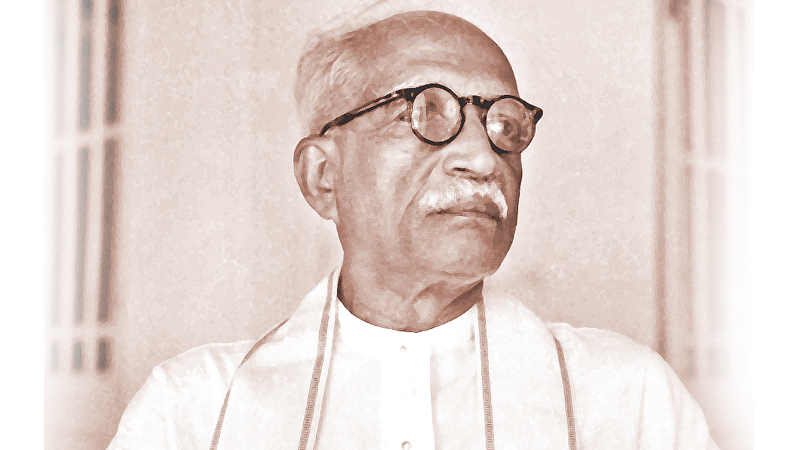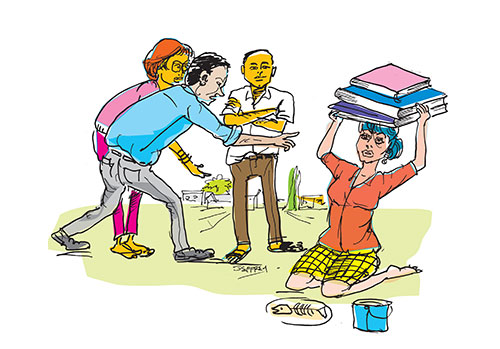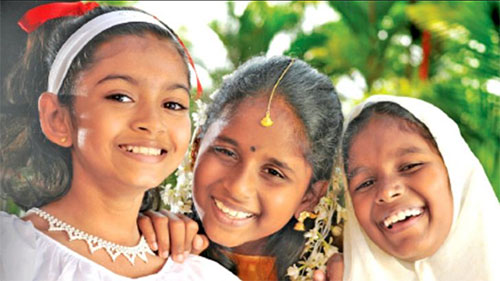By Ramya Kumar
The rally of July 9th and the events that followed are symbolic of the radical changes in governance demanded by the people of this country. We want to be informed and consulted, an end to the abuse of power, fair distribution of the country’s resources and a democratic and inclusive society. The ruling elite, for whom the current system works, are not invested in the seismic shifts that are needed to make this happen. Puzzlingly, in this moment of crisis, the International Monetary Fund (IMF) is being presented as the solution to the country’s woes. This article reflects on what the IMF’s interventions could mean for social welfare, in particular, free education and health in Sri Lanka.
IMF and its agenda
The IMF and the International Bank for Reconstruction and Development (now World Bank) were created in 1944 at a meeting in Bretton Woods, New Hampshire, USA. The IMF was tasked with managing the post-Second World War international monetary system, including balance of payment problems, while the World Bank was mandated to support development projects as part of post-war reconstruction efforts. Called the Bretton Woods institutions, the IMF and World Bank shifted their attention from Europe and East Asia to the “Third World” in the 1950s in the context of Cold War tensions and the perceived threat of communism.
At the behest of the United States and its allies, the IMF’s agenda has been to bolster global capitalism by propagating neoliberal ideology and expanding markets to renew the profitability of capital. The long economic downturn that began in the 1970s, the 1973 oil shocks and ensuing debt crisis saw the IMF and World Bank negotiate structural adjustment loans for indebted governments, imposing various conditionalities, including: trade liberalization, financial deregulation, privatization, and slashed welfare budgets. This recipe did not fix third world economies but intensified balance of payment problems, forcing governments to borrow more, including eventually from volatile capital markets, necessitating more IMF agreements and similar stabilization packages, resulting in more cuts to public spending. The ensuing reforms weakened universal welfare systems across the world, including in Sri Lanka, and also entrenched the dependent relationship between indebted countries and the West.
Universal welfare anathema
The Bretton Woods institutions have consistently intervened to dismantle universal welfare programmes in line with neoliberal ideology; the IMF pressures governments to adopt free market policies and cut public expenditures, creating the conditions for the World Bank to step in to push for public sector reforms involving varying degrees of privatization. The latter is justified based on a distorted interpretation of equity that goes something like this: universal programmes are inequitable because the rich benefit more from them; the rich should pay for (private) services to cross-subsidize the poor; universal welfare programmes should be replaced by targeted welfare schemes; the latter should preferably take the form of “demand-side financing” schemes (i.e. those that channel funds through service-users as opposed service-providers), such as vouchers or conditional cash transfers.
Vouchers for healthcare services, conditional cash transfers for education and other forms of demand-side financing usually do not discriminate between public and private service provision, enabling the private sector to be involved in service delivery. Also, governments (and their high-paid consultants) usually fail to develop effective mechanisms to identify households in need, resulting in piecemeal coverage and issues of access for the poor. In the health sector, insurance schemes have served to separate purchasing and provision, enabling governments to cover (limited) service packages for the poor involving various “cost-sharing” arrangements, and also engage the private sector in health service delivery. In higher education, student loans have supported the expansion of (private) education.
All this requires considerable investment on the part of governments. The UN, World Health Organization, and of course the World Bank, advocate for raising public financing for education and health. While in theory this may look like increasing government support for public education and healthcare, such funds may be channelled to the private sector through “public-private partnerships” (PPP), channeling scarce resources away from universal programmes.
Welfare state and its demise
Sri Lanka has a long history of welfare provisioning. Universal food subsidies came into effect in the early 1940s in the context of food scarcity during the Second World War. Free education became government policy in 1945 when universal primary and secondary education became a citizen right. And the free health policy (1951) eliminated user charges from previously fee-levying units at public hospitals, ensuring access to non-fee levying public healthcare for decades on.
The first World Bank mission to Ceylon took place in 1951 on the invitation of the government during the economic boom associated with the Korean War. Broadly speaking, the World Bank recommended policies that encouraged private capital investment and also proposed a gradual removal of the rice subsidy. The then UNP government adopted the World Bank’s development programme and, in 1953, removed the rice subsidy, for which it paid dearly. The labour movement organized the Great Hartal of 1953 to restore the rice subsidy, leading to events that would end in regime change in 1956.
The first IMF agreement came in 1965 in the face of economic crisis. The stabilization package included more cuts to subsidies, policies to encourage private investment, currency devaluation and trade liberalization. IMF prescriptions did not encourage investment in agriculture and production for local consumption, leaving the country relying on imports for essential items, including food—decisions that we are paying for today. The IMF’s forays mostly took place under UNP regimes, most strikingly its influence on the country adopting an “open economy” after the UNP’s landslide victory in 1977.
Perhaps owing to Sri Lanka’s exemplary status in human development, attributed internationally to its welfare system, and also the political ramifications of dismantling free education and health, successive governments maintained the free education and health policies, with minimal capital investment on infrastructure and facilities. As per the IMF-World Bank recipe, education and healthcare were opened to the market, with various fiscal incentives for private sector expansion. Today, private educational institutions and hospitals are under the Board of Investment, receiving tax concessions, including on imports, lease terms on state lands, in effect, public subsidization of the private sector.
This trajectory of development manifests in government policy. For instance, in 2021, state universities had to increase their intake by 30% with minimal additional investment, while private higher education institutions received huge allocations, including loans for students to access private degree programmes. Not surprisingly, we are left with weakened public education and healthcare systems, along with disgruntled students and workers, and ever-expanding private education and healthcare sectors.
What is at stake
Two years post-pandemic, the education and health sectors are in shambles. Schools are closed and universities are unable to function. Hospitals are struggling to provide services with widespread shortages of medicines and medical supplies, and a rapid exodus of healthcare workers. Some welfare programmes have already come to a standstill, including the Thriposha and school mid-day meal programmes—even when child malnutrition is widespread. Many such programmes may be terminated in the name of economic crisis.
Negotiations are underway with creditors for a debt restructuring programme and an IMF agreement that will come with conditionalities, including austerity. What is to be expected? On July 13, 2022, the IMF Chief blogged a series of fairly typical measures to address the “darkening economic outlook” in the post-pandemic era, including tightening monetary and fiscal policy, targeted measures to support vulnerable households (cash transfers), and reversing restrictions on food imports—more of the same. Earlier this year, analysts in Sri Lanka were pleased with the IMF’s proposals, with some claiming that its recommendation to increase public financing for education and health signaled a shift in the IMF’s approach. As discussed earlier, these funds will likely not be allocated to strengthen universal education or health, but rather to private education institutions, student loans, or health insurance schemes.
Economic crises are times of social upheaval, heralding radical and long-lasting change. Although an IMF agreement may bring short-term respite financed through more loans (and more indebtedness), pro-business policy prescriptions will intensify inequality in the country. The system that the IMF and our ruling elite sustain relies on countries like ours remaining dependent, for consumption by the West, whether tourism, tea, or as a source of workers, sending remittances. The IMF’s austerity measures will further weaken free public education and healthcare. Is this our vision for change? Sri Lanka has said no to dismantling welfare systems before this. There are other avenues to raise funds particularly by redistributing wealth, whether for food assistance in the immediate term or to sustain a universal education and health programme in the medium- and long-term, even within or precisely because of the crisis.



